Our breeding season projects are in full swing here at IBO! Here are some updates from our busy crew of biologists:
Mountain Curlew Outreach
Searching for curlews in the spring is definitely not for the faint of heart here in the west central mountains of Idaho. But nevertheless, we filled all five of Heather’s 2022 “Curlews OUTSIDE the Classroom” workshops!
Educators, master naturalists, Golden Eagle Audubon Society members, and folks from the Adams County Weed Control showed “true birder’s grit” by bracing their scopes through wind, snow, and rain (then some more snow…) to get a glimpse of the charismatic Long-billed Curlew.
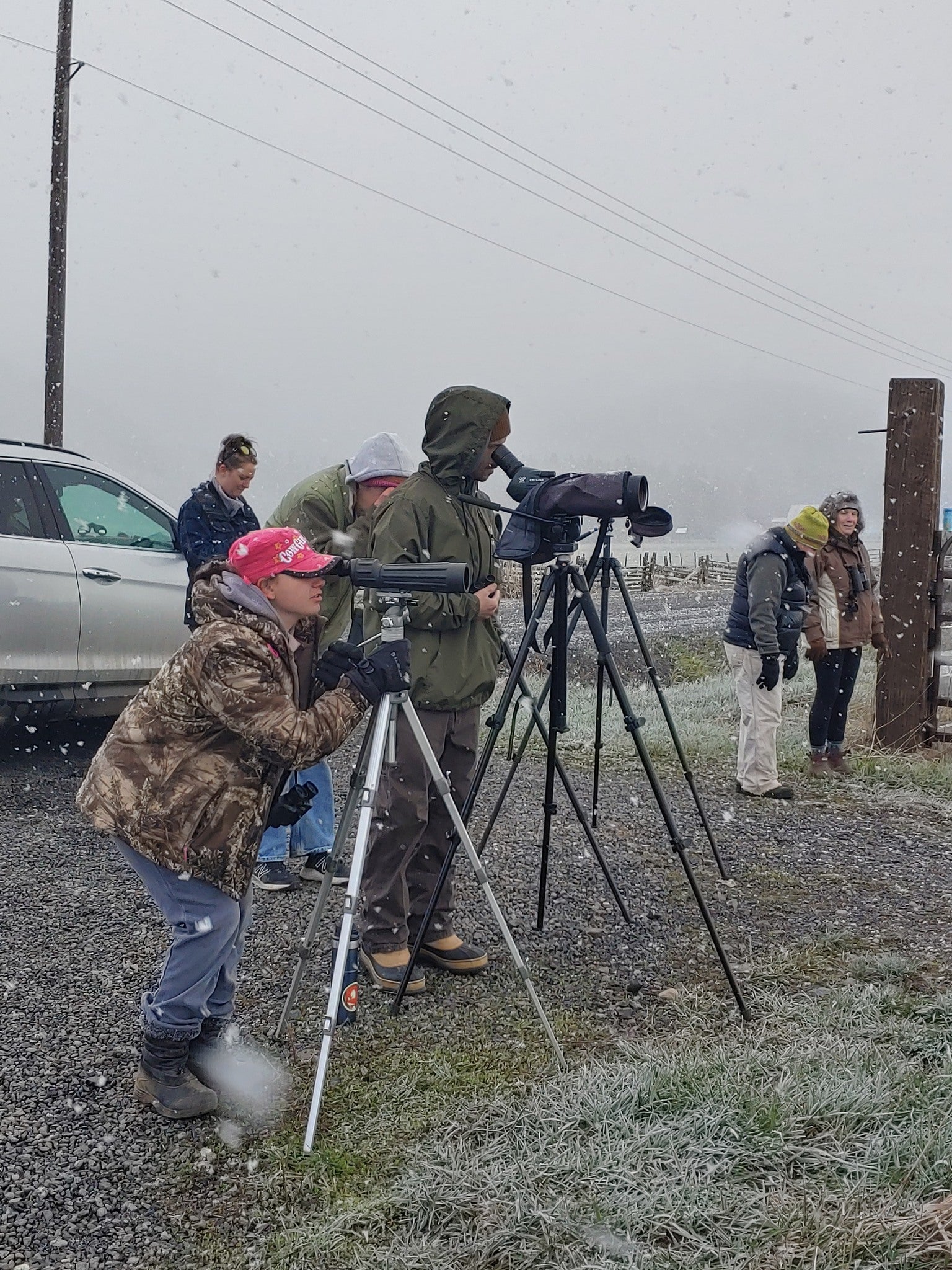
These engaging field workshops are made possible through the valuable collaboration between the Intermountain Bird Observatory (IBO) and Payette Children’s Forest (PCF). Thank you to ALL of the participants that made these opportunities an incredible success!
Our Community Science Coordinator Heather Hayes also had the opportunity to teach Pre-K classes at Roots Forest School about Long-billed Curlews that nest out in the local open grasslands.
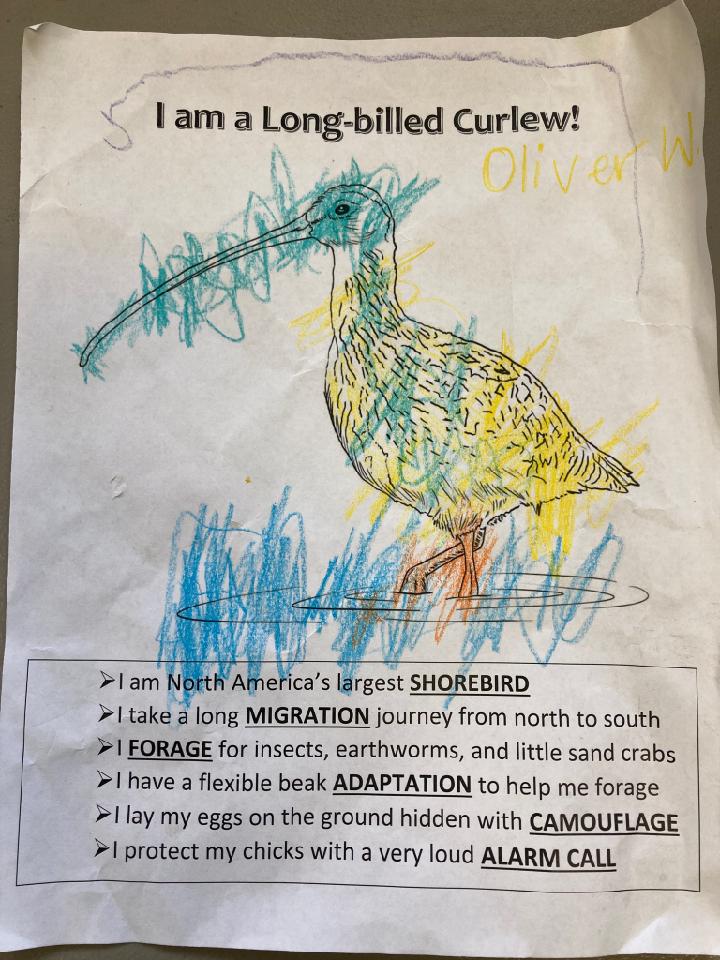
These eager students learned about how birds have specialized tools called “adaptations” to help them survive, such as the curlew’s looooong bill that is adapted for probing underground for food. And they especially liked seeing how the feathers of the owl’s wing blended into the trees-and they all shouted out “camouflage”!!
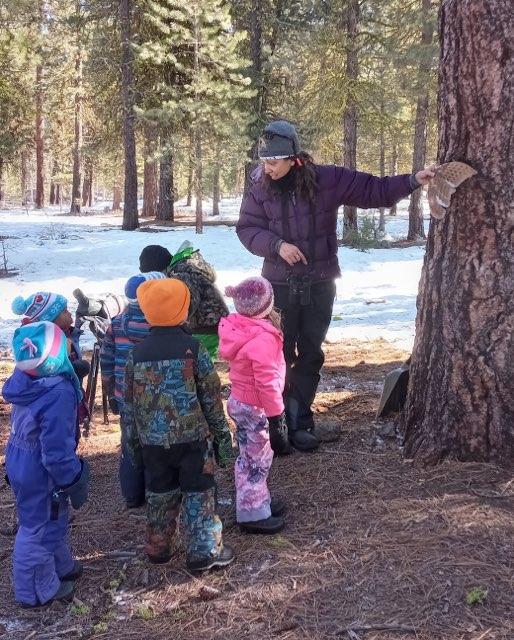
Short-eared Owls
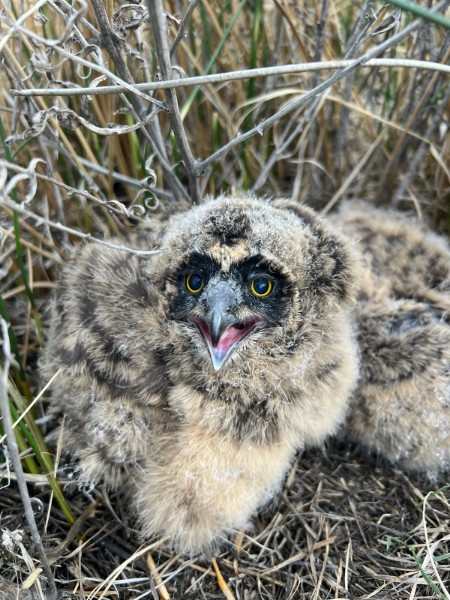
Our team received an M.J. Murdock Charitable Trust Partners in Science Grant with high school science teacher Jaya Smith of Vallivue HIgh School. Jaya will engage students in quantifying the nest site characteristics of Short-eared Owls, particularly in shrubland environments. Lesley Rolls joined us this season to help find nests. With her team of volunteers she was successful in finding five Short-eared Owl nests, has deployed nest cameras in three nests (to quantify diet, growth rate, and depredation), and has started documenting behavior for a potential graduate study in the future. Lastly, we have flown six drone missions (special federal permit required) to create 3D models of nests sites to compare to traditional nest characteristic studies.
Woodpeckers on the Boise National Forest
It has been a challenging year for our woodpecker project in the Boise National Forest. The late season weather caused many delays, added on to the usual issues of muddy roads, blown down trees, mountain lions, bears, and wolf encounters. We have successfully completed 45 routes so far with just a few remaining. Preliminary data suggests we had a good number of White-headed Woodpecker detections and even quite a few Black-backed Woodpeckers in non-burned environments.
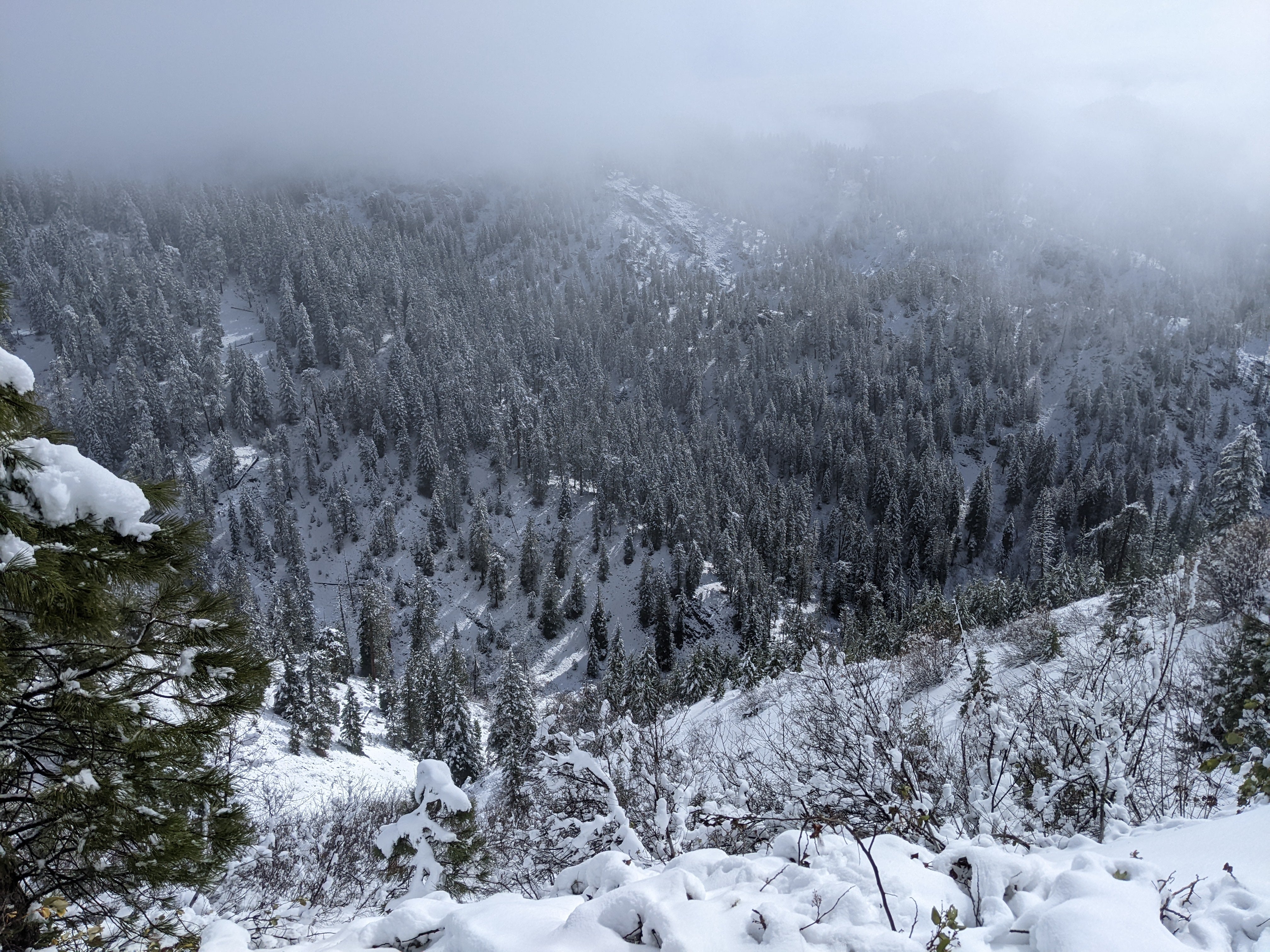
Landbird surveys
We began the breeding bird monitoring season with training in Utah the first week of May, and just finished training our Idaho and Montana crews this past week. We have a huge crew of 17 technicians conducting point-count surveys for multiple projects throughout those three states from now through mid-July. Each morning, technicians visit a grid of randomly-generated points. They survey each one for 6 minutes, and record every bird they see or hear!
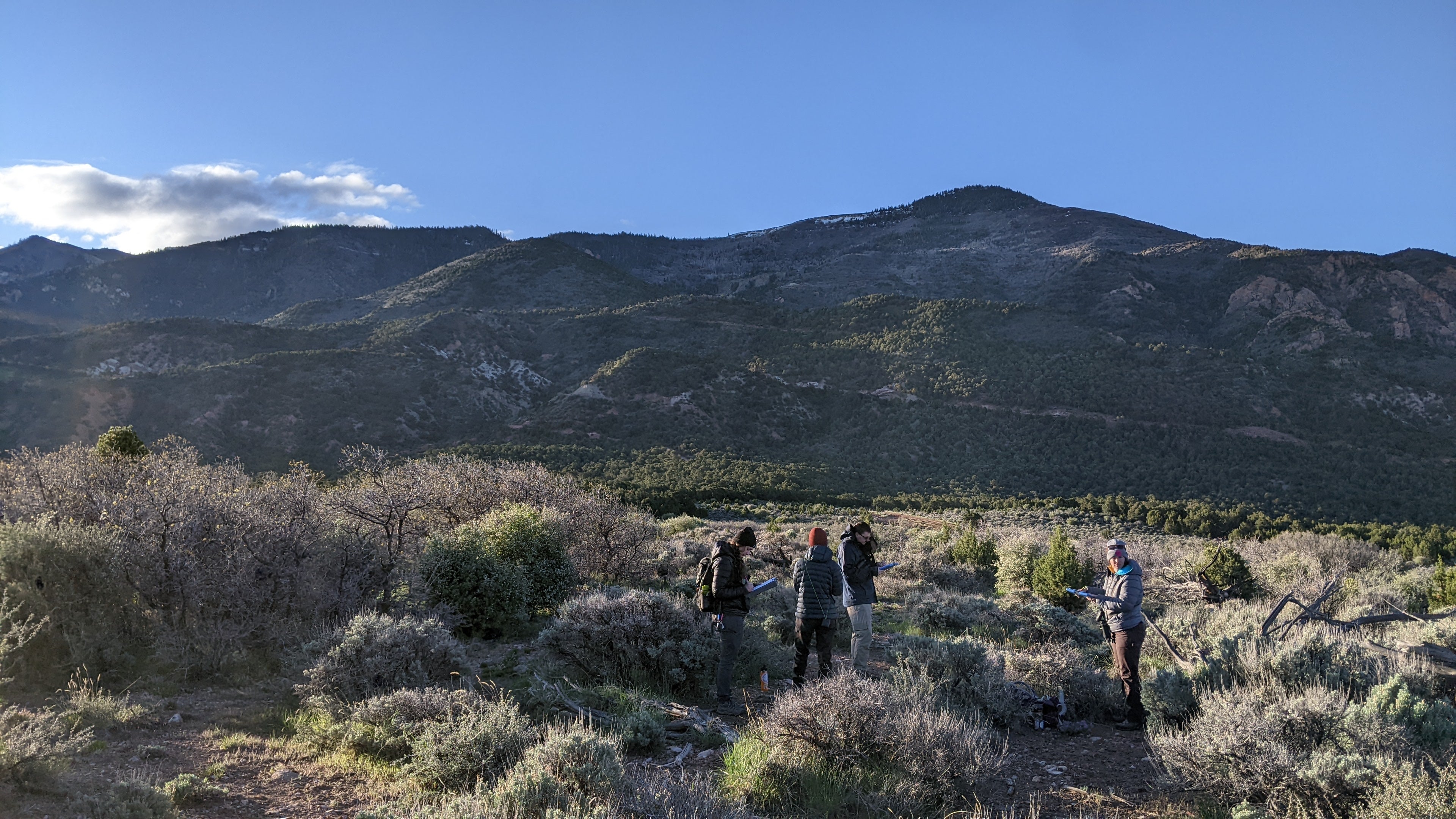
Curlews in the Dakotas
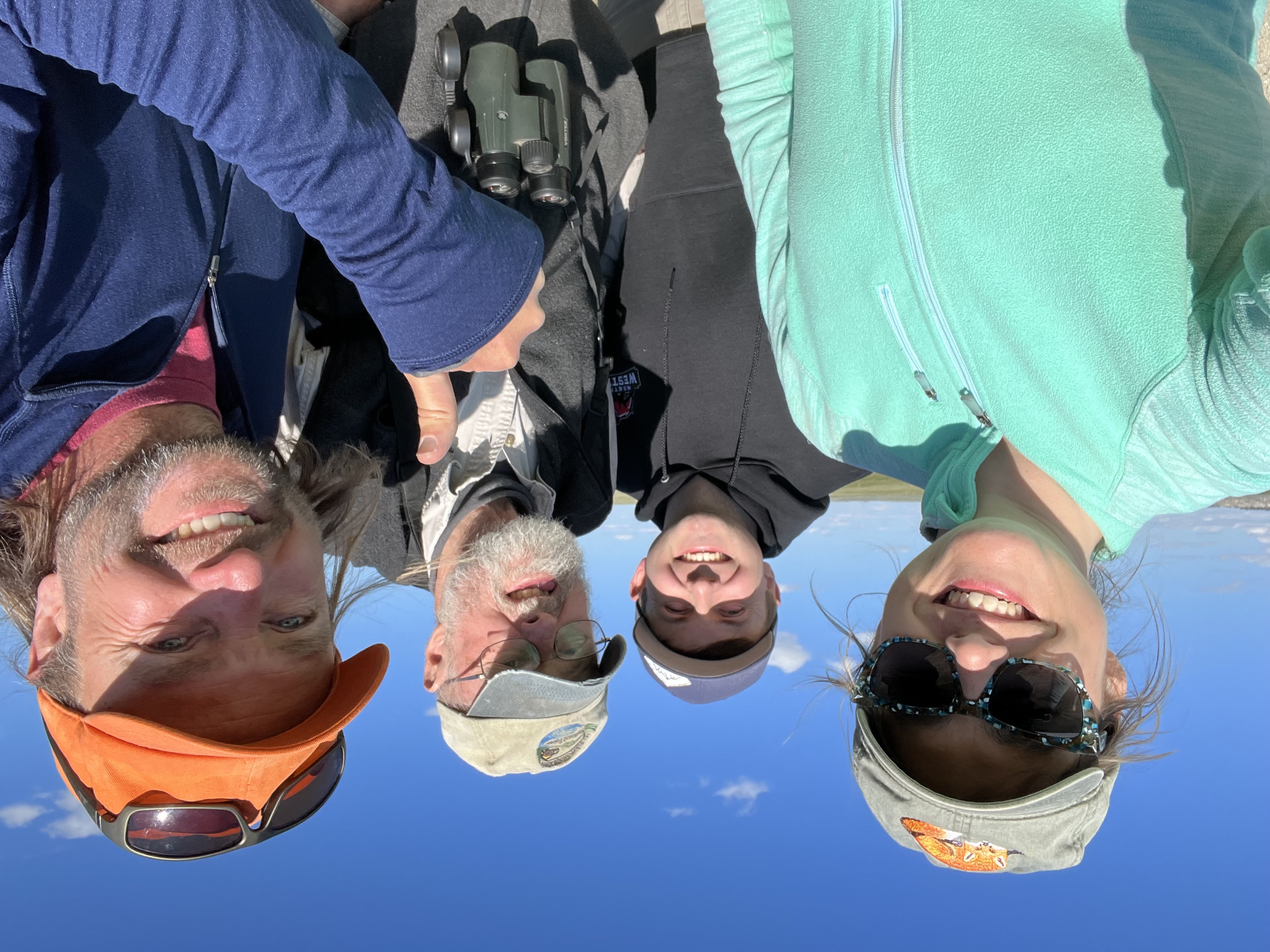
Jay just returned from a 10-day trip to North Dakota and South Dakota where he worked with the North Dakota Game and Fish Department, American Bird Conservancy, and other partners to deploy transmitters on breeding adult Long-billed Curlews. There were some loooong days and many twists and turns – including an inopportune collision with a deer on the second day, a 3-day dose of snow/sleet/wind, and some tricky curlews – but Jay had great people to work with and ultimately was able to deploy all 9 transmitters he brought! The data so far looks amazing and it’ll be exciting to see where they all migrate to once their breeding season is over.
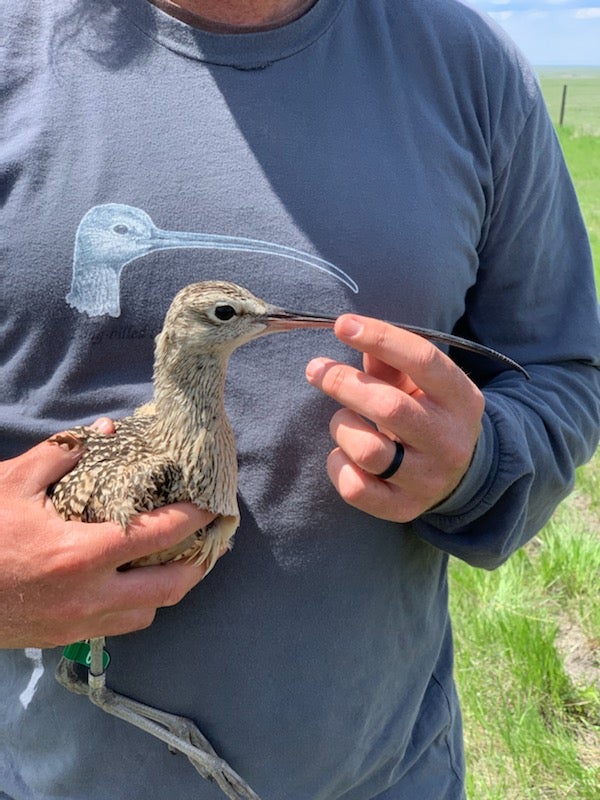
Northern Goshawks
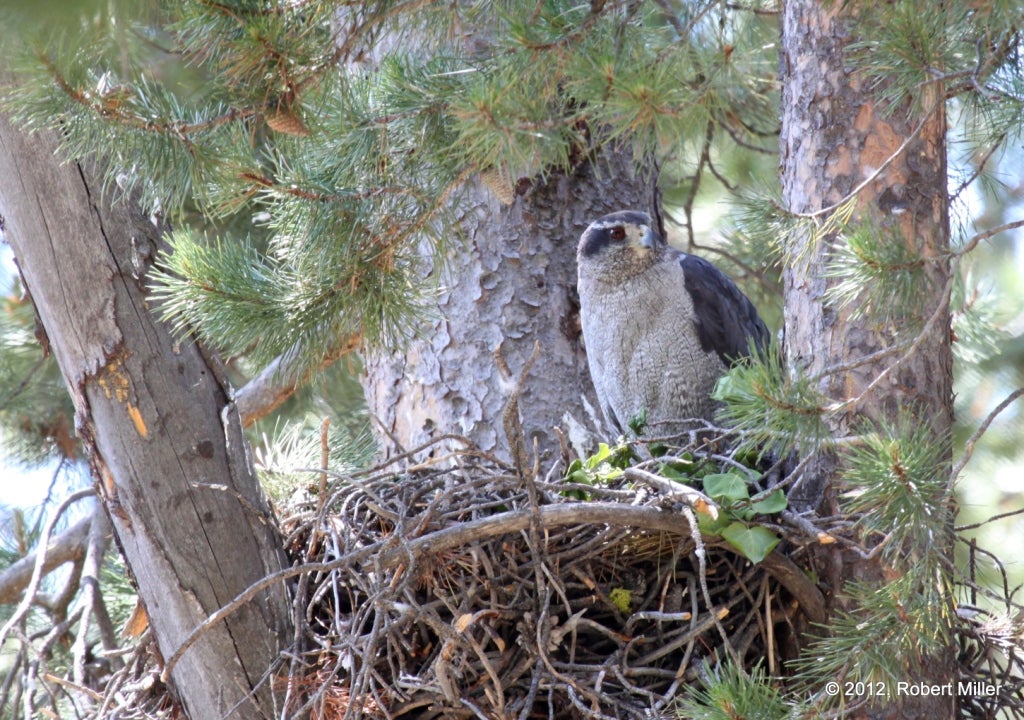
Northern Goshawk work began May 30th in the Sawtooth National Forest. The team consists of team lead Rob Miller, returning technician Eliana Heiser, and new IBO Boise State graduate student Brittanie Loftin. Our past research suggests that this may be a tough year for goshawks with the late season weather. We are hoping to prove that theory wrong.
On our first day in the field, Team Goshawk found a male at an occupied nest. Even better, he is a bird we banded as a nestling in 2015 and last encountered in 2019. That’s a 7 year old goshawk!